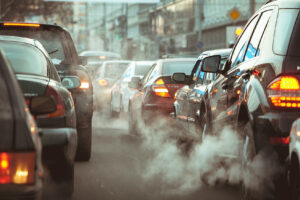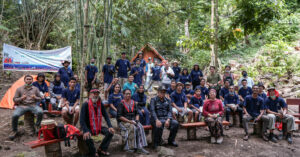
With the naked eye, we can see that there is a lot of plastic waste that we can encounter every day. In addition to single-use plastic bags, we can also find plastic in various forms, such as drink bottles, straws, food wrappers, sanitary napkins, and many others.
A study published in the scientific journal Science Advance states that since the 1950s, the amount of plastic waste produced worldwide has reached 8.3 billion tons, equivalent to the weight of 1 billion elephants. Of this amount, 6.3 billion tons of which became plastic waste. Plastic is a material that is difficult to decompose by nature. It’s no surprise, then, that only 9% of plastics were properly recycled, with the rest being burned or simply dumped into the wild, the majority of which ended up in the ocean.
Getting to Know Microplastics: Tiny but Dangerous
In addition to the obvious effects, such as pollution of the environment, we must also consider other plastic hazards that are unseen. This is due to the fact that plastic can be found in both large and small objects. Microplastic is a term used to describe plastic particles with a dimension of less than 5 millimeters (mm). Isn’t it a tiny little thing? Even head lice are much bigger.
Microplastics are divided into 2 types, namely primary and secondary microplastics. Primary microplastic is a form of microplastic that is specifically made to be used in the manufacture of specific products, such as cosmetics. Meanwhile, secondary microplastics are formed when bigger plastic products, such as plastic bags and drink bottles, break down. As a result, it is safe to conclude that the traces of plastic that we have used will be impossible to eradicate from the face of the earth. In fact, the World Economic Forum (WEF) projects that by 2050, plastic trash will outnumber fish supply, and microplastic waste will outnumber plankton.
So, what effect do microplastics have on marine ecosystems?
Despite their small size, we must be mindful of the vast amount of microplastics because they have a lot of negative effects on the environment, particularly marine ecosystems. According to a number of studies, microplastics are easily eaten by diverse marine biota, such as fish, lobsters, zooplankton, and coral reefs, due to their relatively small size. When they consume it, the physiological system of these animals can be affected. For example, their digestive system can be disrupted, affecting the feces that are excreted, as well as disturbing their reproductive system.
Then, because microplastic transfer can occur in the food chain, microplastics consumed by a biota affect not just that biota, but also other creatures who will eat it later. An example is when zooplankton, which is the main food for a number of small marine biota, accidentally consume microplastics. If later there are small fish or shrimp that eat the zooplankton, then they will also be contaminated by microplastics. Then, because microplastic transfer can occur in the food chain, microplastics consumed by a biota affect not just that biota, but also other creatures who will eat it later. Microplastics are mistakenly consumed by zooplankton, which is the principal food source for a variety of small marine biota. If little fish or shrimp eat the zooplankton later, they will be polluted with microplastics as well. Other studies have also found that microplastics can harm coral reefs by inhibiting their growth and causing them to die quickly.
Plastics and microplastics pose a serious threat to our environment today. We’re sure you don’t want our oceans to be completely covered with plastic in the future, do you? As a result, each of us must begin making steps to address this issue immediately. For example, by avoiding and decreasing the usage of plastic things, sorting trash types from the beginning, and attempting to recycle the plastic items we already have.
In addition to these small initiatives, it is equally necessary to be more active in advocating the actual execution of the government’s plastic and ocean waste management regulations in Indonesia. Since 2019, the EcoNusa Foundation has held a Sail to Campus program to encourage young people to take an active role in ocean conservation. Through this program, participants are invited to discuss various important and interesting issues regarding proper marine management with trusted sources. If you are curious about the discussions that have taken place, you can watch them directly on the EcoNusa TV YouTube channel!











